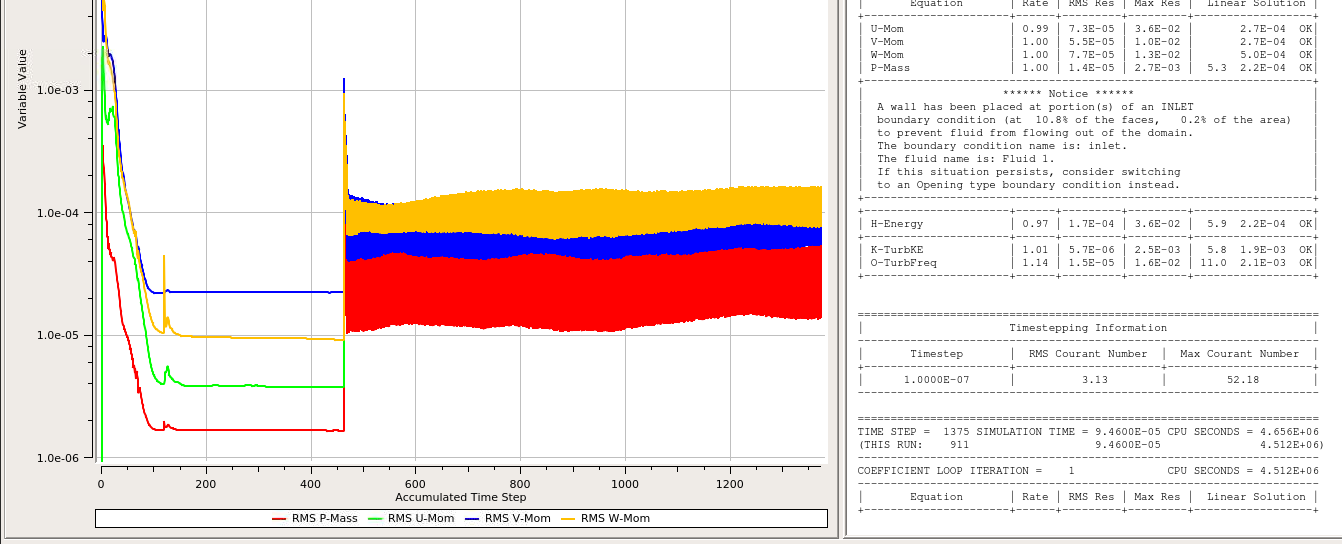TAGGED: cfx
-
-
September 10, 2021 at 1:21 pm
yangyee
SubscriberHi, everyone,
When I conduct a turbomachinery simulation with URANS or SRS-type method in ANSYS CFX, the residuals of the unsteady simulation are relatively higher than the corresponding steady case, which is used to initialize the flow field. The boundary condition and the discrete scheme for turbulence and convection term keep same between the steady and unsteady simulation. The physical time step(almost 1e-6s) I used is also enough because CFX is an implicit solver. Can anybody tell me the reason? Thank you in advance!
September 13, 2021 at 10:02 pmSurya Deb
Ansys EmployeeHello,
How many iterations per time step do you test for the transient solver?
What happens if you increase this number? Do you see a reduction in the residual?
Also for transient solution, it is important to make sure that the residuals converge properly at each time step.
Regards SD
Viewing 1 reply thread- The topic ‘Why the residual of unsteady simulation is higher than the corresponding steady simulation in CFX?’ is closed to new replies.
Ansys Innovation SpaceTrending discussions- air flow in and out of computer case
- Varying Bond model parameters to mimic soil particle cohesion/stiction
- Eroded Mass due to Erosion of Soil Particles by Fluids
- Guidance needed for Conjugate Heat Transfer Analysis for a 3s3p Li-ion Battery
- Centrifugal Fan Analysis for Determination of Characteristic Curve
- I am doing a corona simulation. But particles are not spreading.
- Issue to compile a UDF in ANSYS Fluent
- JACOBI Convergence Issue in ANSYS AQWA
- affinity not set
- Resuming SAG Mill Simulation with New Particle Batch in Rocky
Top Contributors-
3862
-
1414
-
1221
-
1118
-
1015
Top Rated Tags© 2025 Copyright ANSYS, Inc. All rights reserved.
Ansys does not support the usage of unauthorized Ansys software. Please visit www.ansys.com to obtain an official distribution.
-
The Ansys Learning Forum is a public forum. You are prohibited from providing (i) information that is confidential to You, your employer, or any third party, (ii) Personal Data or individually identifiable health information, (iii) any information that is U.S. Government Classified, Controlled Unclassified Information, International Traffic in Arms Regulators (ITAR) or Export Administration Regulators (EAR) controlled or otherwise have been determined by the United States Government or by a foreign government to require protection against unauthorized disclosure for reasons of national security, or (iv) topics or information restricted by the People's Republic of China data protection and privacy laws.












